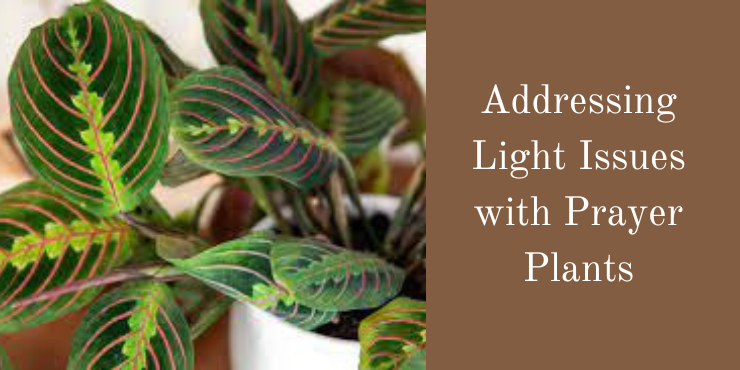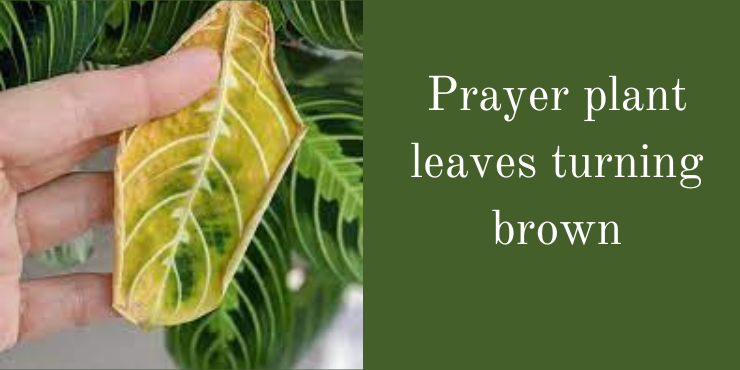Introduction
Prayer plant leaves turning brown, known for their striking foliage and unique leaf movements, can be a wonderful addition to your indoor garden. However, one common issue that many plant enthusiasts face is the browning of the leaves. In this article, we’ll explore the reasons behind this problem and provide practical solutions to help your prayer plant thrive.
Understanding Prayer Plants
Prayer plant leaves turning brown, scientifically known as Maranta leuconeura, are captivating additions to the world of indoor gardening. These unique plants earned their name from their daily leaf movements, which resemble hands folded in prayer. Originating from the lush rainforests of Brazil, these plants have specific care requirements to maintain their distinct, vibrant appearance.
What sets prayer plants apart is their incredible ability to respond to light changes. As daylight fades, their leaves gracefully fold upwards, revealing a striking display of contrasting colors and patterns. This distinctive feature adds a touch of elegance and mystique to any indoor setting.
To truly understand prayer plants, it’s crucial to recognize their preferences and needs. These plants thrive in environments that mimic their natural habitat. They require a delicate balance of factors like light, humidity, and water to stay healthy and vibrant.
The marbled or variegated leaves of prayer-plants come in various shades and patterns, making them visually appealing and versatile for interior decor. The delicate, intricate designs on their leaves serve as a testament to the marvels of nature.
Caring for a prayer plant goes beyond routine maintenance; it’s an opportunity to connect with the fascinating world of plant biology and natural beauty. By understanding the unique characteristics of these plants, you can provide them with the care they need to thrive and continue enchanting observers with their daily dance of prayer.
Common Causes of prayer plant leaves turning brown

The lush and vibrant foliage of prayer-plants can be a captivating addition to your indoor space, but when their leaves start turning brown, it’s essential to identify the underlying issues. Brown leaves on prayer plants can be a sign of stress and unhappiness, and understanding the common causes behind this discoloration is crucial for their well-being.
Insufficient Light: Prayer plants, like many houseplants, require the right amount of light to flourish. If they don’t receive enough bright, indirect sunlight, their leaves may begin to turn brown at the edges or tips.
Overwatering: Overly wet soil can lead to root rot, a condition that causes brown spots and damage to the leaves. Finding the balance between keeping the soil moist but not waterlogged is key.
Underwatering: On the flip side, not providing enough water can also lead to brown leaves. Prayer plants prefer consistent, moderate moisture, and letting the soil dry out too much can stress the plant.
Low Humidity: These rainforest natives thrive in high-humidity conditions. When grown indoors, the dry air can rob them of the moisture they require, resulting in browning leaves.
By understanding and addressing these common causes, you can help your prayer plant maintain its lush, green appearance and continue to bring a touch of nature’s beauty into your home.
Diagnosing the Issue
When your cherished prayer plant starts displaying brown leaves, it’s essential to act swiftly and address the underlying problem. Accurate diagnosis is the first step towards nursing your plant back to health and ensuring it continues to thrive.
Leaf Inspection: Begin by closely examining the brown leaves. Not all brown leaves are alike. If you notice the browning primarily at the tips and edges of the leaves, this may be an indication of low humidity or underwatering. Conversely, if the browning appears more uniform across the leaf, it could be related to inadequate lighting conditions.
Soil Examination: Don’t forget to check the soil as well. If the soil is consistently soggy, it points to overwatering as the root cause of the problem. If the soil feels dry and crumbly, underwatering may be the issue.
By conducting a thorough examination and accurately identifying the source of the issue, you can take targeted steps to rectify the problem and restore your prayer plant to its full, vibrant glory. Your attentiveness and care will go a long way in ensuring your plant’s well-being.
Addressing Light Issues with Prayer Plants

Proper lighting is one of the fundamental keys to the health and vibrancy of your prayer-plants. When your cherished green companions exhibit brown leaves, it may well be a sign that they are not receiving the light they need to thrive.
Proper Placement: Ensure that you position your prayer plant in an area with bright, indirect sunlight. These plants flourish in settings where they receive gentle, filtered light, ideally away from direct sun exposure, which can scorch their delicate leaves.
Supplemental Lighting: In cases where your home lacks sufficient natural light, you might consider supplementing with artificial grow lights. This can be especially useful during the darker months of the year, providing your prayer-plants with the essential light they require for healthy growth.
By attending to their lighting needs, you can greatly enhance the overall well-being and aesthetics of your plant leaves turning brown, helping them maintain their lush greenery and striking foliage. Proper lighting ensures that they continue to be a delightful presence in your indoor garden.
Managing Watering for Prayer Plants
Proper watering is a critical aspect of caring for your prayer-plants, and when their leaves begin to turn brown, it often signifies an issue related to their watering routine. Here’s how to ensure your prayer-plants receive the right amount of moisture:
Watering Frequency: Prayer plants prefer to be kept consistently moist but not soggy. Water them when the top inch of the soil feels dry to the touch. This typically translates to watering every 1-2 weeks, but it can vary depending on your home’s conditions.
Watering Technique: When you water your prayer plant, ensure that you do so at the base of the plant, near the soil. Avoid wetting the leaves as this can lead to fungal issues. The goal is to keep the root zone consistently hydrated without leaving the soil waterlogged.
Balancing the right amount of water is essential for the health of your prayer-plants. By adopting a mindful and strategic approach to watering, you can help them thrive and enjoy their lush, vibrant appearance.
Boosting Humidity for Prayer Plants
Prayer plants, originating from the lush rainforests of Brazil, thrive in high-humidity environments. When their indoor conditions lack the moisture they need, their leaves may start to turn brown. To ensure your prayer-plants stay healthy and vibrant, consider these methods for boosting humidity:
Humidity Trays: Place a tray filled with water and pebbles near your prayer plant. As the water evaporates, it increases the humidity in the immediate vicinity of the plant.
Mist the Leaves: Regularly misting the leaves with a fine spray of water mimics the moisture levels they would experience in their natural habitat. This helps prevent the leaves from drying out and browning.
By addressing the humidity needs of your prayer-plants, you can create an environment that closely resembles their native rainforest setting, allowing them to display their distinctive and captivating leaf movements while maintaining their lush green appearance.
Pruning Brown Leaves on Prayer Plants
When the leaves of your prayer plant begin to brown, don’t despair. Pruning is a practical and aesthetic solution that can help your plant regain its vitality. Here’s how to go about it:
Assess the Damage: Carefully inspect your prayer plant to identify the brown or damaged leaves. Determine whether the browning is confined to the leaf tips, and edges, or scattered across the entire leaf.
Trimming Technique: Using clean, sharp scissors or pruning shears, trim the brown portions of the affected leaves. Aim to cut back to the healthy, green areas of the leaf. This not only removes the unsightly browning but also encourages new growth.
Pruning Considerations: If your prayer plant has multiple brown leaves, it’s advisable to stagger your pruning over several sessions rather than remove them all at once. This ensures your plant doesn’t undergo excessive stress.
Sterilization: To prevent the spread of disease, ensure your pruning tools are sterilized before and after each use. This minimizes the risk of introducing infections to the plant.
Pruning brown leaves is not only aesthetically pleasing but also a practical way to enhance the overall health of your prayer plant. By following these steps, you can promote new growth and maintain the plant’s lush and vibrant appearance.
Preventive Care for Prayer Plants
Taking proactive measures to keep your prayer plant healthy and vibrant is essential to prevent issues like brown leaves. Here’s how to provide the best preventive care:
Fertilizing: During the growing season, which typically spans from spring to early fall, feed your prayer plant with a balanced, water-soluble fertilizer. A balanced fertilizer with equal proportions of nitrogen, phosphorus, and potassium, such as 10-10-10, works well. Ensure you follow the manufacturer’s instructions for dilution and application.
Repotting: Prayer plants benefit from repotting every two years. This not only refreshes the soil but also provides more space for growth. Choose a slightly larger pot and well-draining potting mix specifically formulated for houseplants.
Regular Inspection: Make a habit of regularly inspecting your prayer plant for any signs of stress, including browning leaves. Address issues promptly by adjusting lighting, humidity, and watering conditions as needed.
Pruning: Regularly remove dead or dying leaves, spent flowers, and any other signs of distress. This practice not only keeps your plant looking neat but also encourages better air circulation.
Preventive care helps your Prayer plant leaves turning brown thrive and minimizes the risk of brown leaves and other issues. By staying attentive to its needs and providing the right care, you can enjoy the beauty of your prayer plant year-round.
Conclusion
In conclusion, prayer plant leaves turning brown is a common issue, but with proper care and attention to light, watering, and humidity, you can revive your plant’s health and vibrancy. By following the tips and techniques outlined in this article, your prayer plant can thrive in your home.
FAQs
Can I save my prayer plant with brown leaves?
Yes, you can save your prayer plant by addressing the underlying issues causing the prayer plant leaves to turning brown, such as light, watering, and humidity problems.
Should I cut all the brown leaves off my prayer plant?
It’s advisable to trim brown leaves back to healthy green portions, as this promotes new growth and improves the plant’s appearance.
How often should I water my prayer plant?
Water your prayer plant when the top inch of the soil feels dry. Typically, this means watering every 1-2 weeks.
What is the best fertilizer for prayer plants?
A balanced, water-soluble fertilizer with a ratio of 10-10-10 is suitable for feeding your prayer plant.
Can prayer plants recover from underwatering?
Yes, prayer plants can recover from underwatering by adjusting your watering routine and providing the right amount of moisture. Be patient, as recovery may take time.


